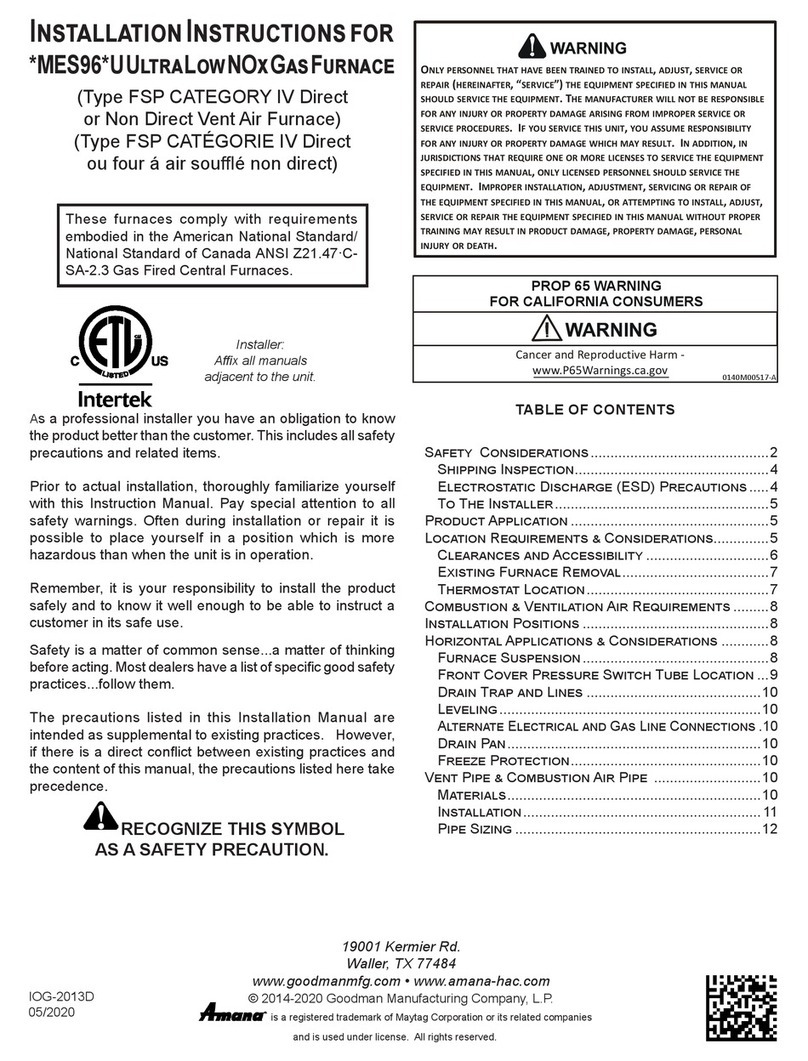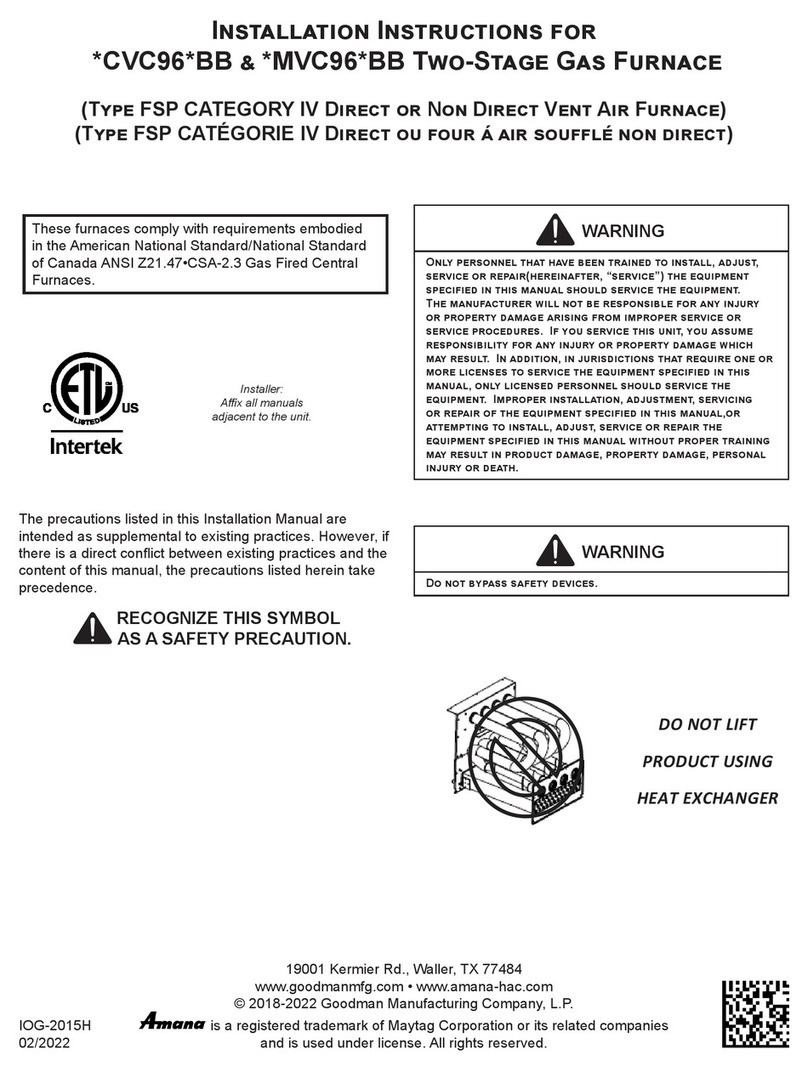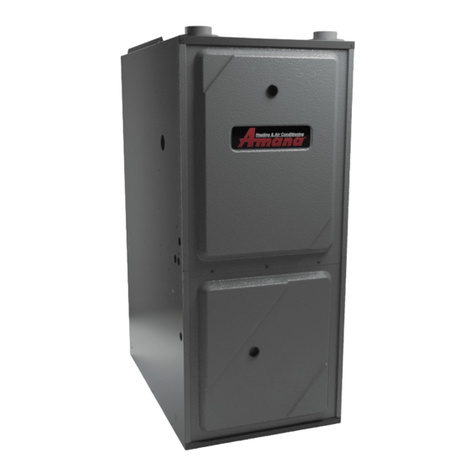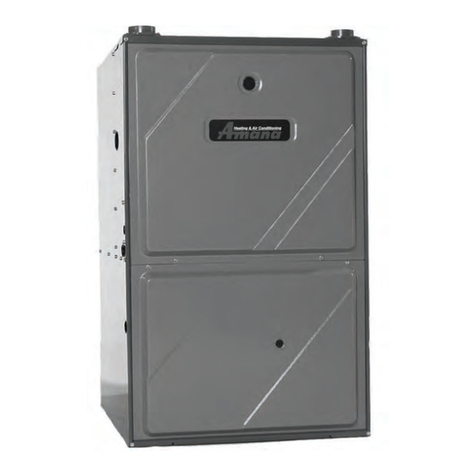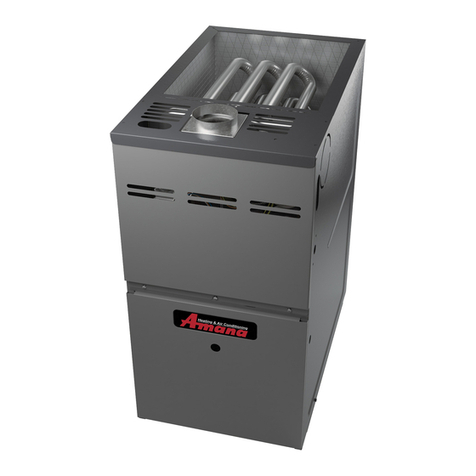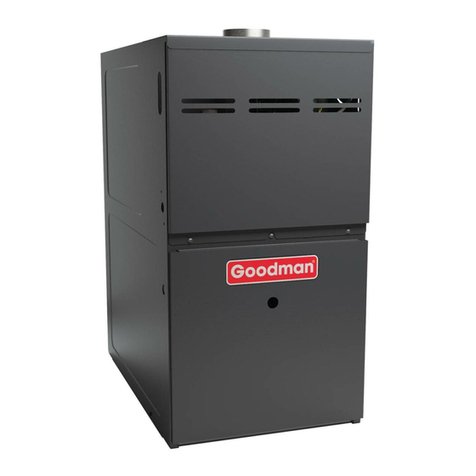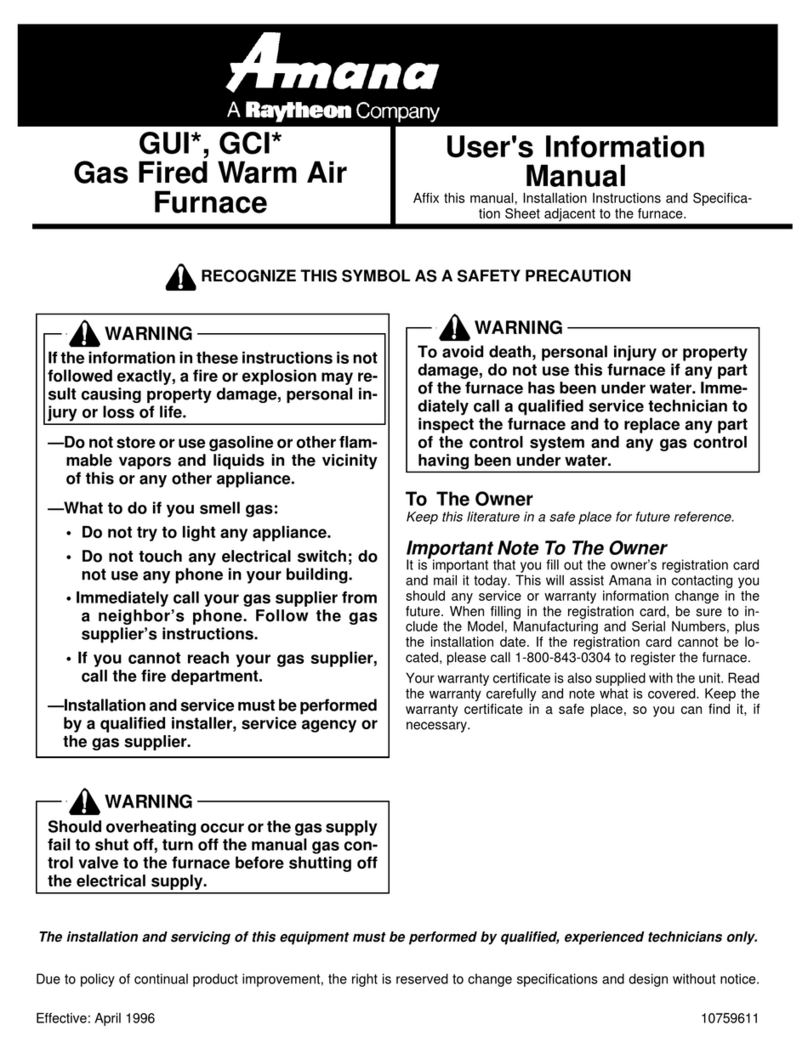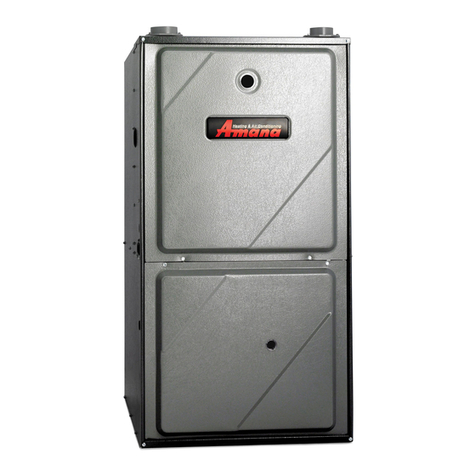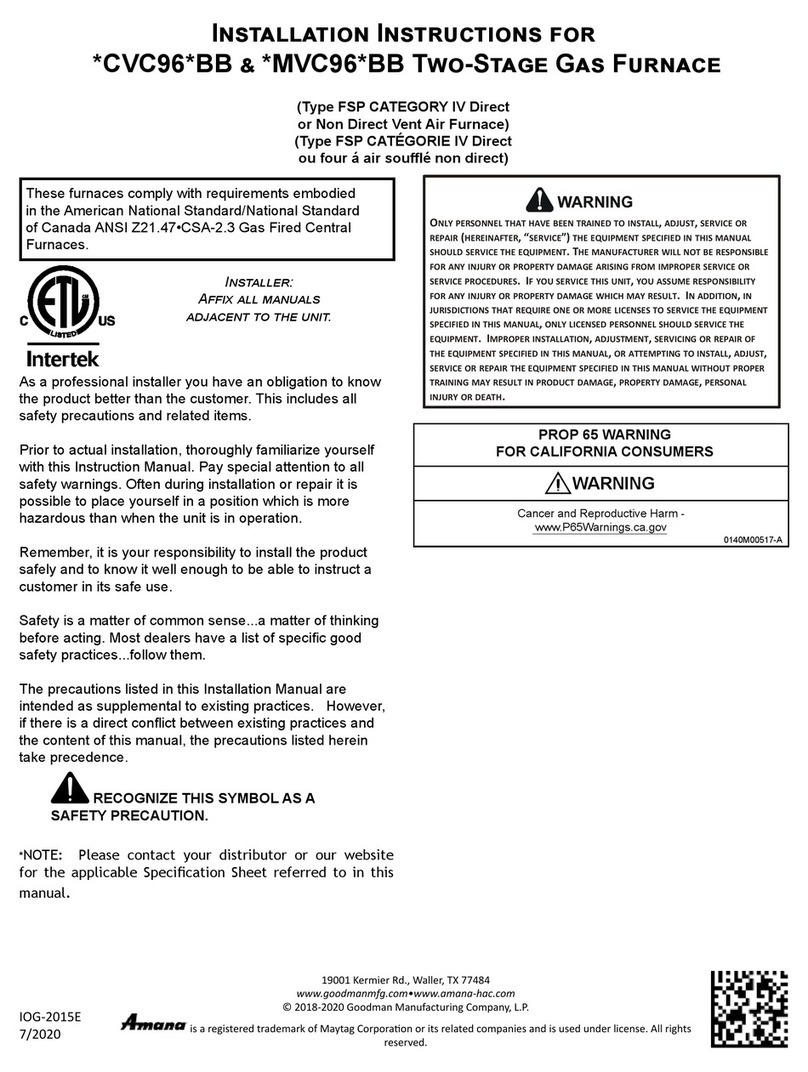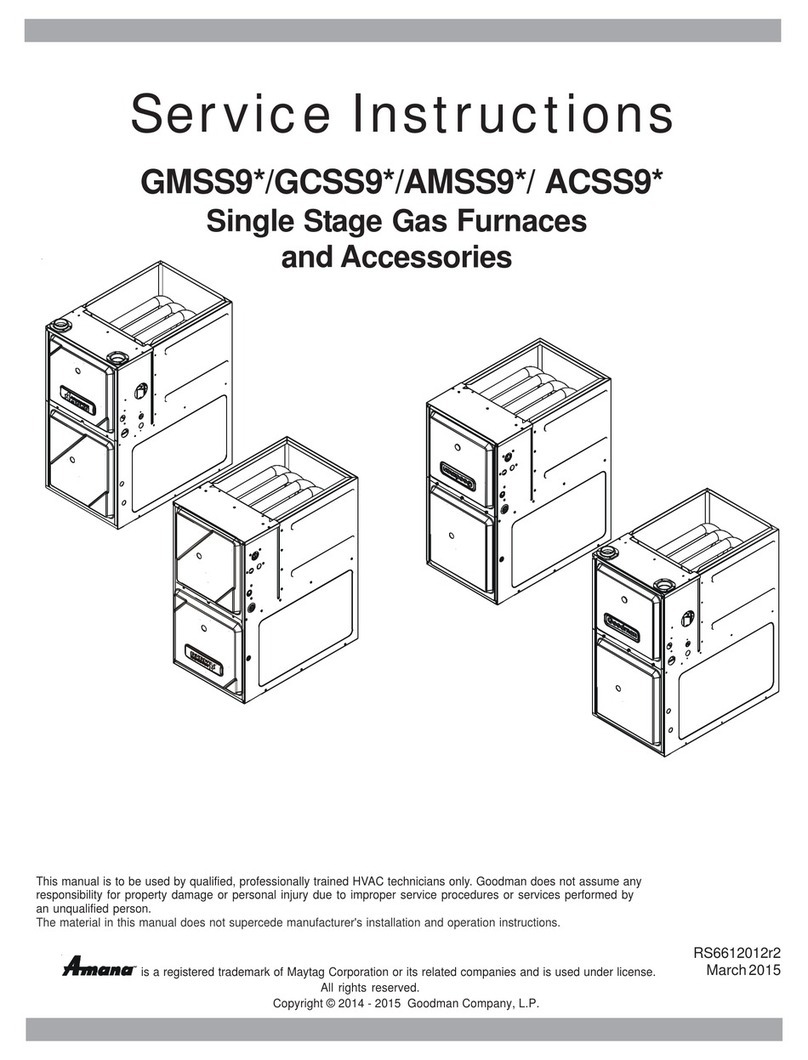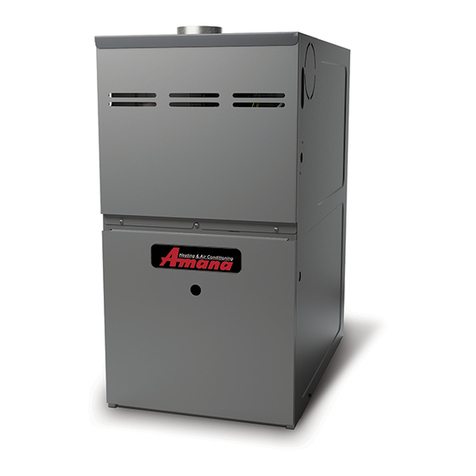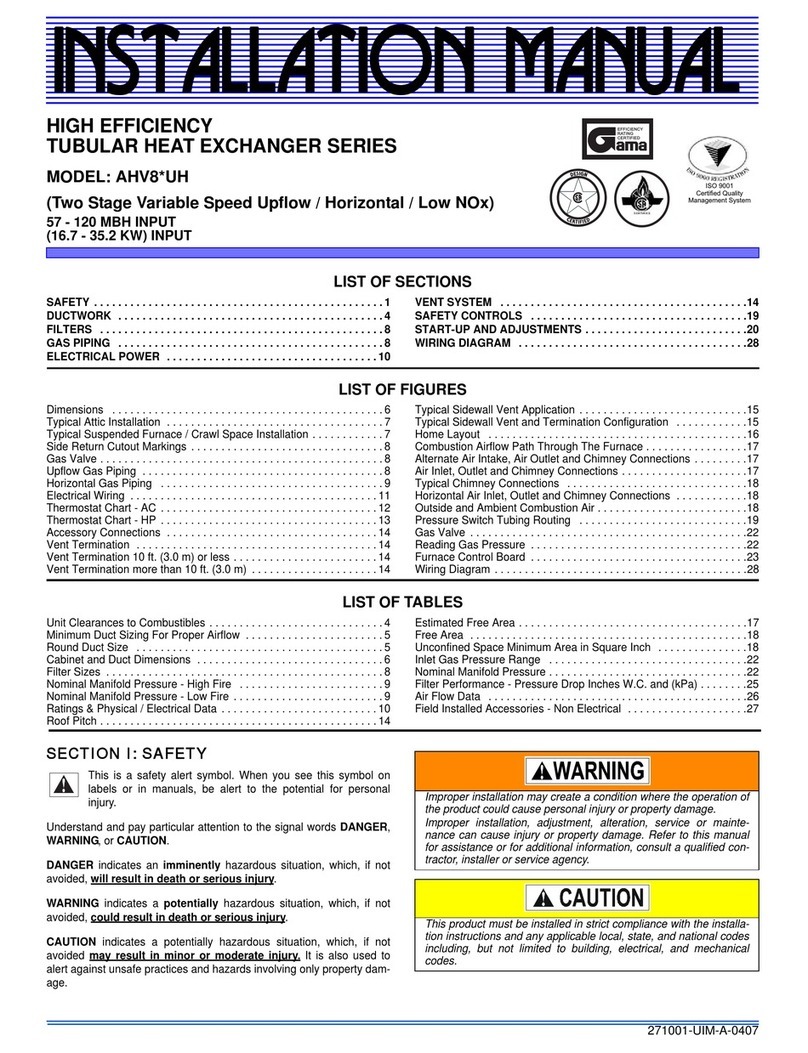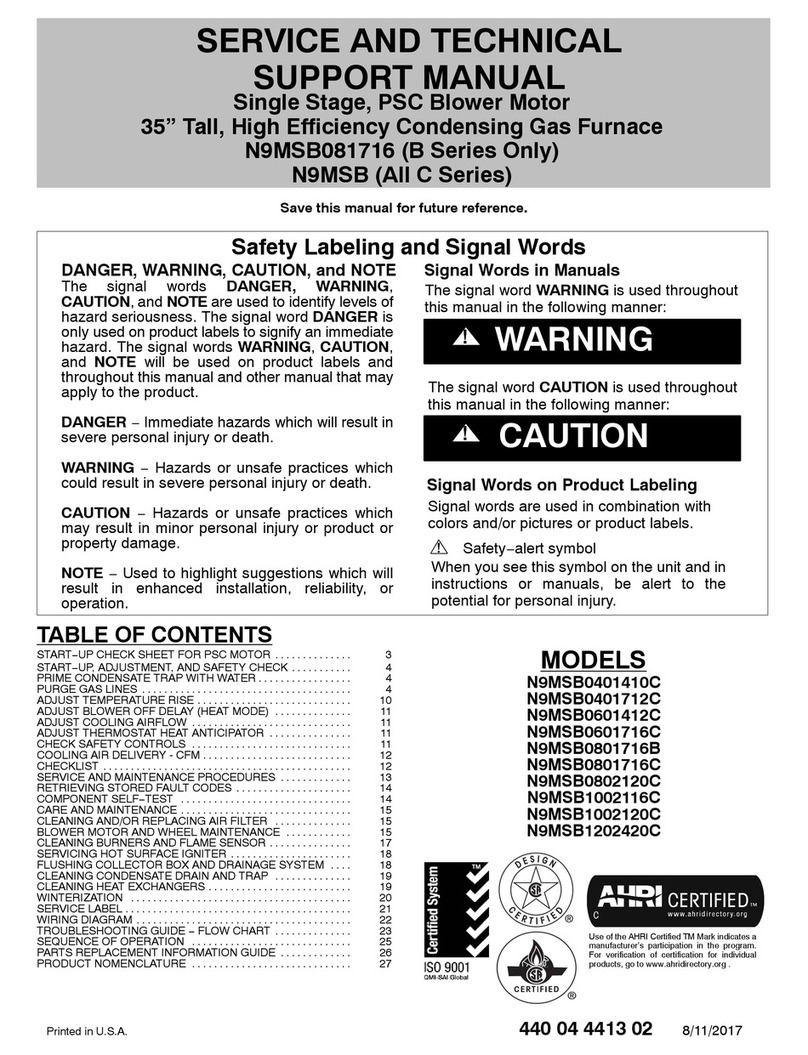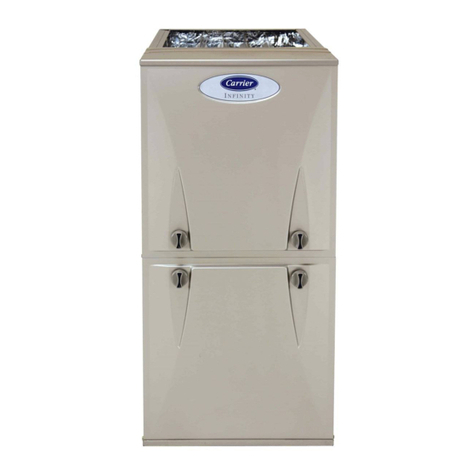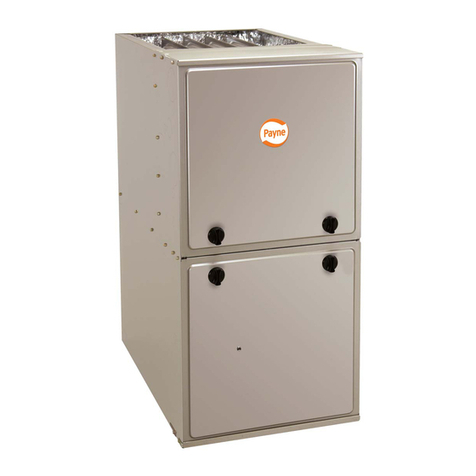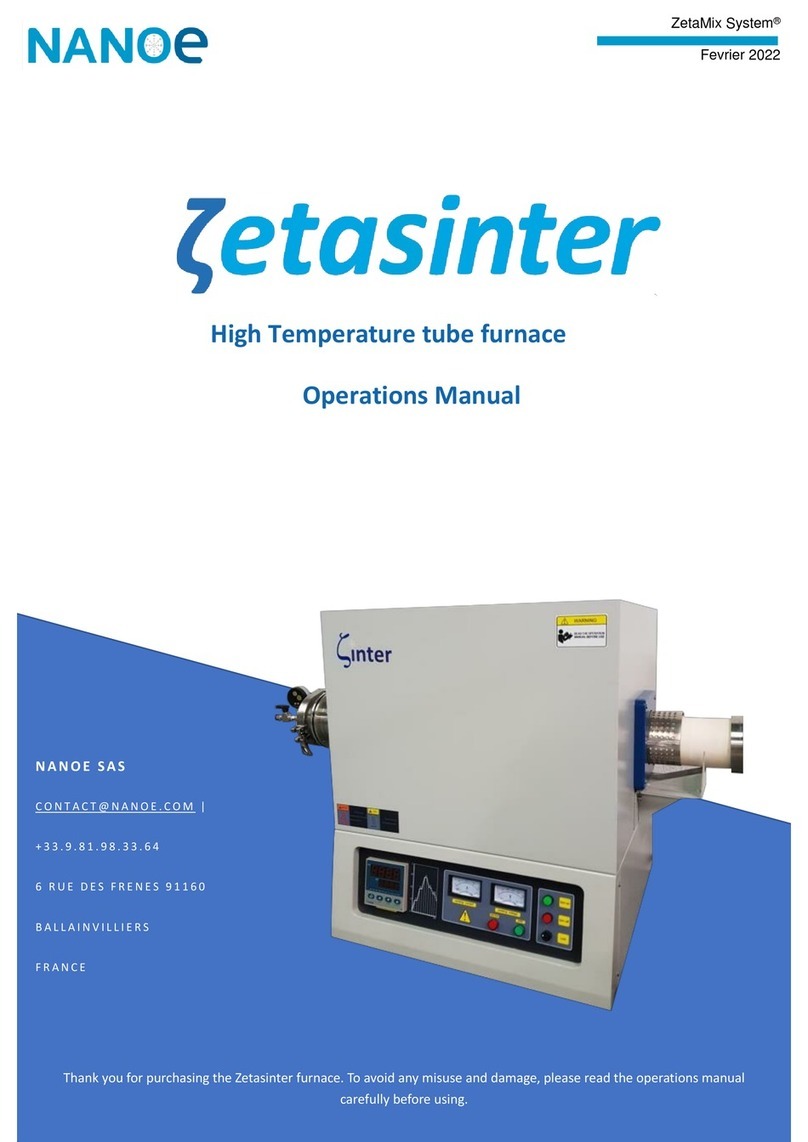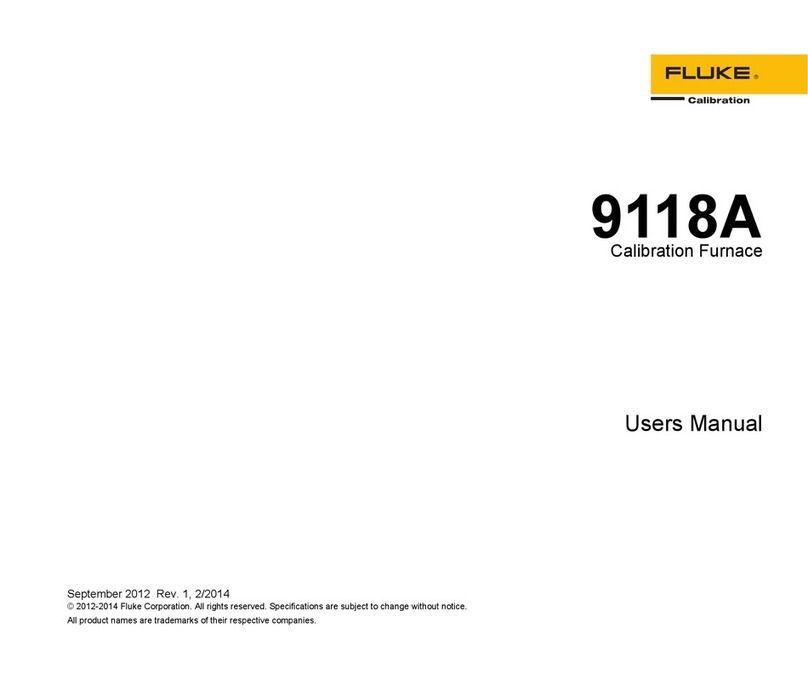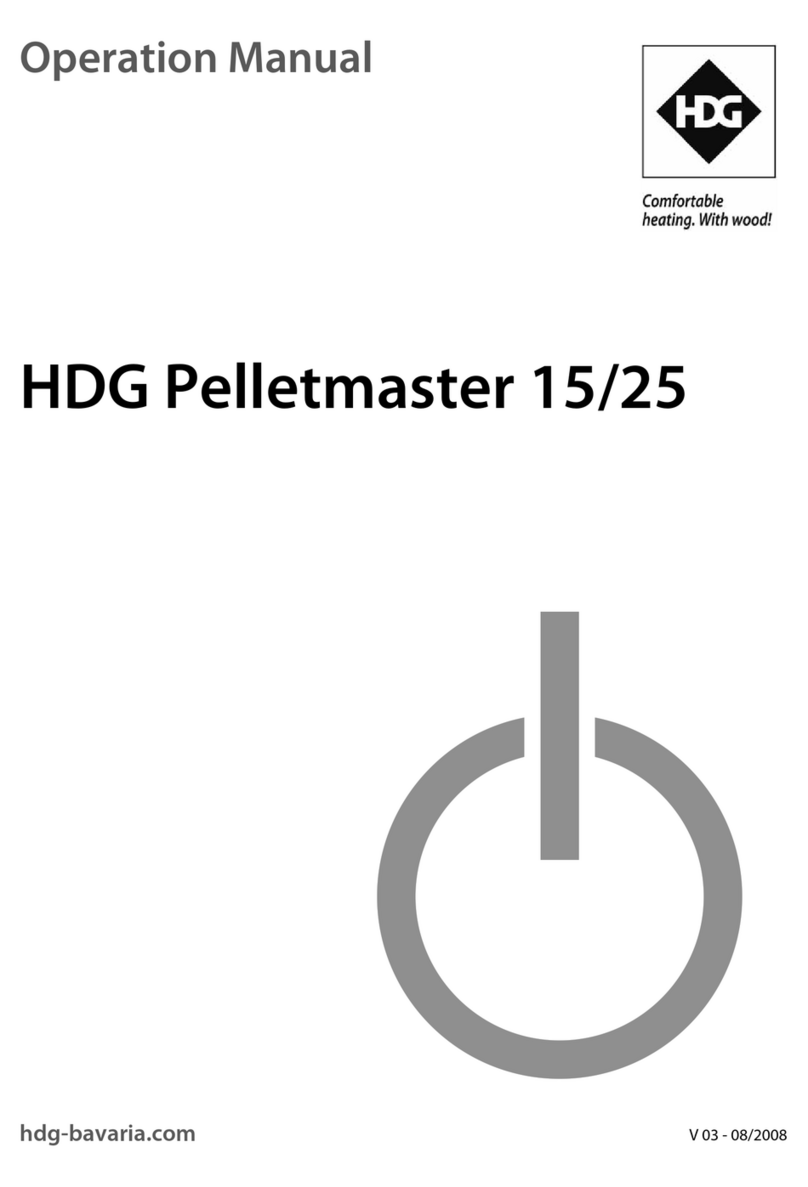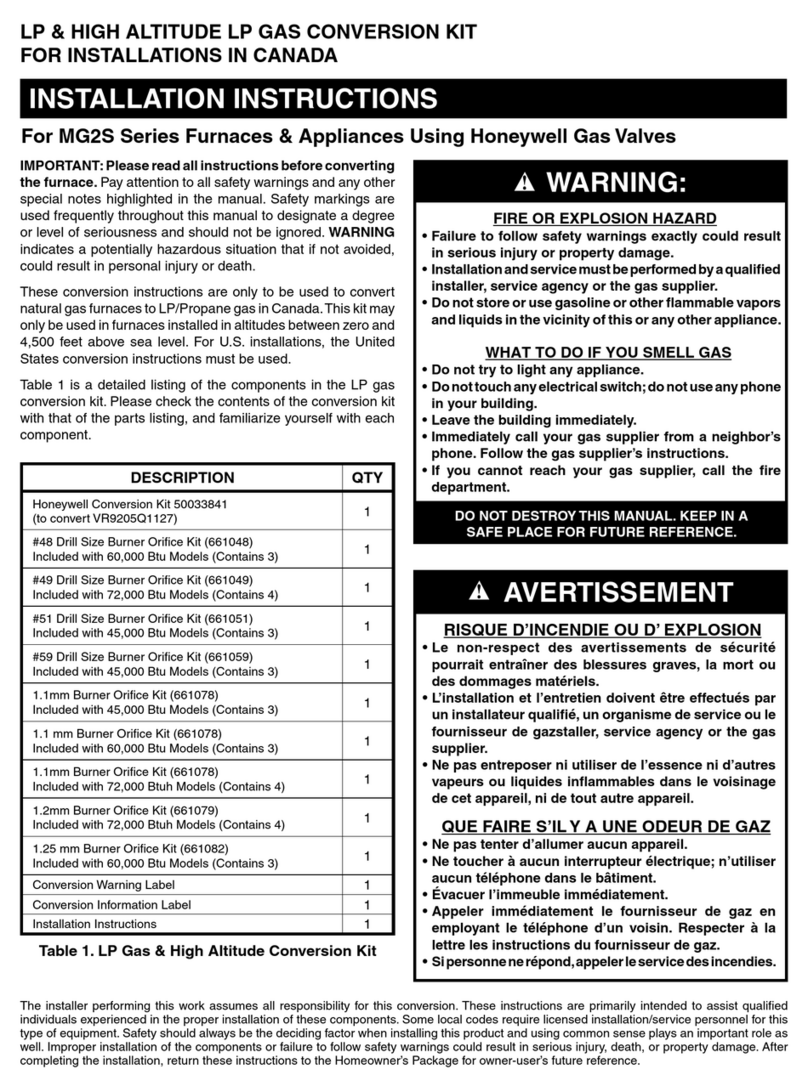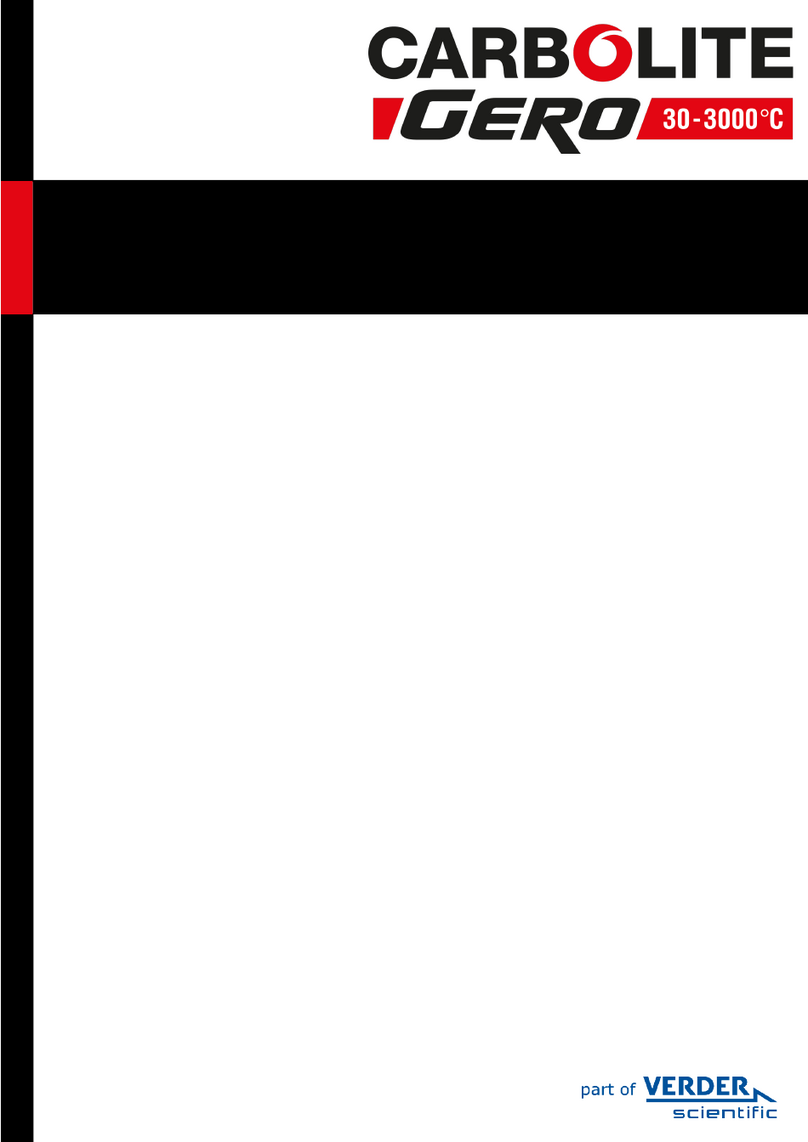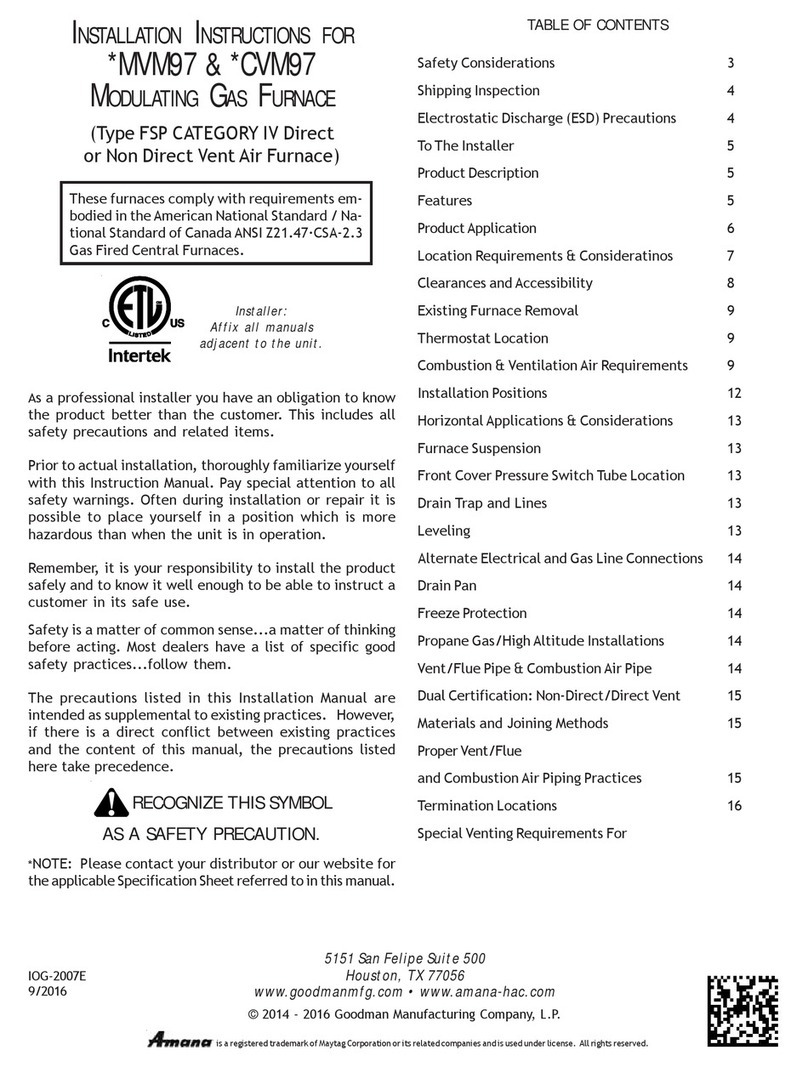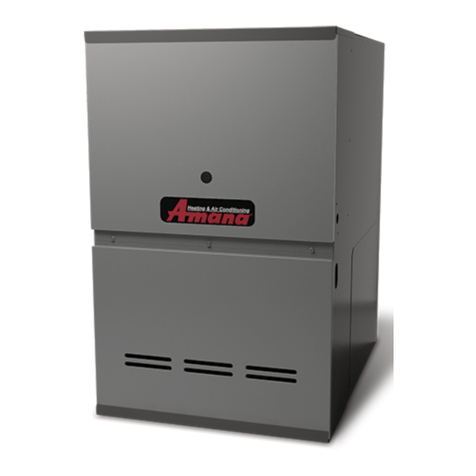
4
maximum CFM, and motor speed connections, and venting.
These furnaces are designed for Category I venting only.
T
O
PREVENT
PROPERTY
DAMAGE
,
PERSONAL
INJURY
OR
DEATH
DUE
TO
FIRE
,
DO
NOT
INSTALL
THIS
FURNACE
IN
A
MOBILE
HOME
,
TRAILER
,
OR
RECREATIONAL
VEHICLE
.
WARNING
PRODUCT APPLICATION
Thisfurnaceisprimarilydesignedforresidential home-heating
applications. It is NOT designed or certified for use in mobile
homes,trailers or recreationalvehicles. Neitheris it designed
or certified for outdoor applications. The furnace must be
installedindoors(i.e., attic space,crawlspace,or garage area
providedthe garage areais enclosed withan operating door).
This furnace can be used in the following non-industrial com-
mercial applications:
Schools, Office buildings, Churches, Retail stores,
Nursing homes, Hotels/motels, Common or office areas
In such applications , the furnace must be installed with the
following stipulations:
• It must be installed per the installation instructions
provided and per local and national codes.
• It must be installed indoors in a building constructed
on site.
• It must be part of a ducted system and not used in a
free air delivery application.
• It must not be used as a “make-up” air unit.
• All other warranty exclusions and restrictions apply.
This furnace may be used as a construction site heater ONLY
if all of the following conditions are met:
• The vent system is permanently installed per these
installation instructions.
• Aroomthermostatisusedtocontrolthefurnace.Fixed
jumpersthatprovidecontinuousheatingCANNOTbe
used and can cause long term equipment damage.
Bi-metal thermostats, or any thermostat affected by
vibration must not be used during construction.
• Return air ducts are provided and sealed to the
furnace.
• Areturn air temperature range between 60ºF (16ºC)
and 80ºF (27ºC) is maintained.
• Air filters are installed in the system and replaced
daily during construction and upon completion of
construction.
• The input rate and temperature rise are set per the
furnace rating plate.
• 100%outsideair must be usedforcombustionduring
construction. Temporary ducting may be used to
supply outside air to the furnace for combustion – do
not connect this duct directly to the furnace. Size this
duct according to NFPA 54/ANSI Z223.1 section for
3. With concealed damage, carrier must be notified as
soon as possible - preferably within five days.
4. File the claim with the following support documents
within a nine month statute of limitations.
• Original or certified copy of the Bill of Lading, or
indemnity bond.
• Original paid freight bill or indemnity in lieu thereof.
• Originalorcertifiedcopyofthe invoice, showing trade
and other discounts or reductions.
• Copy of the inspection report issued by carrier’s
representative at the time damage is reported to
carrier.
The carrier is responsible for making prompt inspection of
damage and for a thorough investigation of each claim. The
distributoror manufacturer willnotaccept claims fromdealers
for transportation damage.
Keep this literature in a safe place for future reference.
ELECTROSTATIC DISCHARGE (ESD) PRECAUTIONS
NOTE: Discharge body’s static electricity before touching
unit. Anelectrostatic discharge canadverselyaffectelectrical
components.
Use the following precautions during furnace installation and
servicing to protect the integrated control module from dam-
age. By putting the furnace, the control, and the person at
the same electrostatic potential, these steps will help avoid
exposing the integrated control module to electrostatic dis-
charge. This procedure is applicable to both installed and
non-installed (ungrounded) furnaces.
1. Disconnect all power to the furnace. Do not touch the
integrated control module or any wire connected to the
control prior to discharging your body’s electrostatic
charge to ground.
2. Firmly touch a clean, unpainted, metal surface of the
furnaces near the control. Any tools held in a person’s
hand during grounding will be discharged.
3. Service integrated control module or connecting
wiring following the discharge process in step 2. Use
cautionnot to rechargeyour body withstatic electricity;
(i.e., do not move or shuffle your feet, do not touch
ungrounded objects, etc.). If you come in contact with
an ungrounded object, repeat step 2 before touching
control or wires.
4. Discharge your body to ground before removing a new
control from its container. Follow steps 1 through 3 if
installing the control on a furnace. Return any old or
new controls to their containers before touching any
ungrounded object.
TOTHE INSTALLER
Before installing this unit, please read this manual thoroughly
to familiarize yourself with specific items which must be ad-
hered to, including but not limited to: unit maximum external
static pressure, gas pressures, BTU input rating, proper elec-
tricalconnections,circulatingairtemperature rise, minimum or
